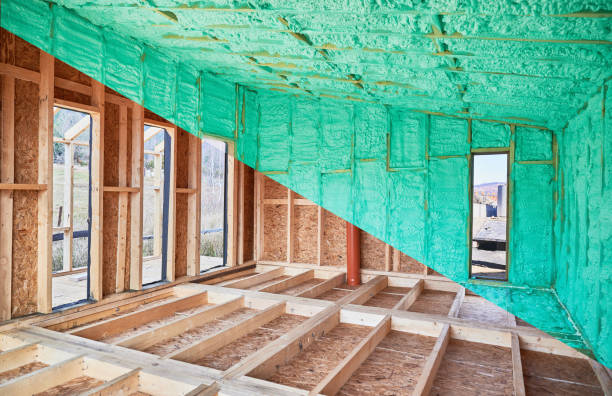Why More Builders Should Be Using Insulated Ceiling Panels
In today's ever-evolving construction landscape, energy efficiency and sustainability have taken center stage. Builders and contractors are continually seeking smarter, more cost-effective ways to construct high-performance buildings that meet modern demands. One such solution rapidly gaining traction is the use of insulated ceiling panels. These panels not only improve energy efficiency but also enhance structural integrity, reduce installation time, and provide long-term value.
At the forefront of this innovation is DATUM PHASE CHANGE LTD, a company recognized for its pioneering work in PCM panels and advanced thermal control materials. In this article, we will explore the reasons why more builders are making the switch to insulated ceiling panel systems and how this choice is transforming construction for the better.
The Rise of Insulated Ceiling Panel Usage
As energy standards tighten and consumer awareness grows, builders must find new ways to meet building code requirements and sustainability targets. Insulated ceiling panels, with their pre-engineered design and high R-value insulation, offer a practical and efficient solution. They are no longer niche products for specialized buildings; instead, they’re becoming standard in residential, commercial, and industrial projects alike.

What is an Insulated Ceiling Panel?
An insulated ceiling panel is a composite building element that combines a layer of insulation, usually rigid foam or phase change materials (PCMs), with an outer skin made from metal, drywall, or composite sheathing. These panels serve as the ceiling structure, providing insulation, support, and sometimes even soundproofing—all in one. The result? Less on-site labor, fewer materials, and greater energy performance.
Why Builders Love Them: Benefits That Make a Difference
Thermal Performance
The number one reason builders choose insulated ceiling panels is their superior thermal insulation. With airtight seals and consistent thickness, these panels significantly reduce thermal bridging and heat loss.
Time-Saving Installation
Traditional insulation systems can be labor-intensive and time-consuming. Insulated ceiling panels arrive on-site ready to install, drastically reducing construction time and labor costs.
Structural Strength
These panels aren’t just insulating—they’re strong. Often used in commercial and industrial buildings, their design adds rigidity and load-bearing capacity, which can reduce the need for additional structural supports.
Aesthetic and Customization Flexibility
Manufacturers like DATUM PHASE CHANGE LTD offer insulated ceiling panels in a variety of finishes, colors, and textures, allowing for both aesthetic flexibility and performance optimization.
PCM Panels: A Smart Upgrade for Next-Level Energy Savings
Phase Change Material (PCM) panels are a game-changer in insulation. These materials absorb and release heat as they transition between solid and liquid states, stabilizing indoor temperatures and reducing reliance on HVAC systems.
DATUM PHASE CHANGE LTD specializes in PCM technology, incorporating it into ceiling and wall panels for enhanced thermal storage and control. By integrating PCMs, builders can meet high-efficiency goals without compromising design.
Applications of Insulated Ceiling Panels in Modern Construction
- Residential Homes: For energy-conscious homeowners, insulated ceiling panels are a top choice in passive houses and net-zero builds.
- Commercial Buildings: Offices, schools, and shopping centers benefit from quick installations and long-term utility savings.
- Industrial Spaces: Warehouses and factories appreciate the panels’ durability and ability to regulate internal climates effectively.
- Retrofit Projects: Old buildings get a thermal and aesthetic upgrade without major structural changes.
Environmental Impact and Sustainability
Sustainability isn’t just a buzzword anymore—it's a requirement. Insulated ceiling panels help builders achieve LEED certification and comply with green building standards. Because they reduce energy consumption and material waste, these panels offer a low carbon footprint over their lifecycle.
Additionally, companies like DATUM PHASE CHANGE LTD prioritize eco-friendly materials and manufacturing processes, further amplifying the environmental benefits of using their products.
Cost vs. Value: Are They Worth It?
Initially, insulated ceiling panels may seem more expensive than traditional methods. However, when you factor in reduced labor, faster project timelines, and long-term energy savings, the ROI becomes clear. In many cases, payback is achieved within just a few years.
Furthermore, buildings with high-performance insulation tend to have increased property value due to lower operational costs and superior comfort.
Conclusion
As construction practices evolve, builders must keep pace by embracing innovative materials that offer performance, efficiency, and sustainability. Insulated ceiling panels are one such solution—an all-in-one product that simplifies construction while improving outcomes. Whether you're building homes, commercial spaces, or industrial warehouses, these panels save time, reduce costs, and help create high-performing, future-ready buildings.
DATUM PHASE CHANGE LTD continues to lead the way by integrating cutting-edge PCM panel technology, giving builders the tools they need to stay ahead of energy regulations and customer expectations. Now is the time to consider insulated ceiling panels as a core component in your next construction project.
Frequently Asked Questions
What makes insulated ceiling panels different from traditional insulation?
Insulated ceiling panels are pre-manufactured with consistent quality, incorporating both insulation and structural components. This ensures superior performance and faster installation compared to traditional batt or loose-fill insulation.
Can insulated ceiling panels be customized for different projects?
Yes. Manufacturers like DATUM PHASE CHANGE LTD offer customization in terms of size, insulation type, finish, and even color to match project needs.
How do PCM panels improve thermal performance?
PCM panels absorb excess heat when temperatures rise and release it when temperatures drop, maintaining a stable indoor environment and reducing HVAC loads.
Are these panels suitable for both new builds and retrofits?
Absolutely. Insulated ceiling panels can be used in new construction or retrofitted into existing buildings for an energy-efficiency boost.
Do insulated ceiling panels contribute to fire safety?
Many insulated ceiling panels are rated for fire resistance, depending on their materials. Be sure to verify product certifications for fire performance when selecting panels.
How long do insulated ceiling panels last?
With proper installation and maintenance, these panels can last several decades. Their durability and resistance to moisture and pests also enhance their lifespan.














